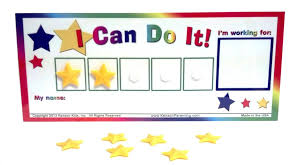Are the type of prompts used when teaching skills important? Absolutely! It may not seem like a big deal. You present a prompt and the learner performs the skill correctly. So what’s the harm in that? Prompts are meant to be an instructional tool. They should be used to teach correct responding and then faded as soon as possible to prevent prompt dependency.
What about verbal prompts? They are great for teaching verbal responses. They can be used during discrete trial teaching and to model appropriate statements and questions. Examples of skills in which verbal prompts can be used include communication, reading, tacting, and asking and responding to questions.
However, when it comes to teaching skills to be independent, we do not want to rely on verbal prompts. Verbal prompts can become embedded in chains of responding and cause prompt dependency. Meaning, unless someone is there to verbally prompt in some way, the child does not correctly respond. For example, if you are teaching a learner to brush his teeth, the goal would be that he can brush independently without anyone in the room. If you tell him to “get the brush,” and “put toothpaste on the brush,” the odds the learner will complete those steps independently when you are not there are low.
Physical Prompts are best for teaching skills that we hope to be independent. Even the sight of you can be difficult to fade. It is best to stand behind the learner to not embed your presence into the chain and place yourself between the learner and the materials. From behind the learner you can guide their hand, arm, or shoulder depending on the fade step. This makes it easier in the future to shadow, and increase your distance from the learner since you are already behind him. In addition to brushing teeth and other self-care skills, other examples where physical prompts are used include following an activity schedule, completing household chores, initiating conversation, cooking meals, packing lunch for school or work, and leisure activities.
I know this is contrary to some other behavior analysts, but I personally do not use gestural prompts. The whole goal is fading prompts and getting the learner to display skills independently. So why embed a finger into the chain? If I want them to attend to something, I physically prompt their hand to point to the target instead of using my own hand. It is best to have the learner perform the skill using their own hands and teach them to identify what item to get based on the step in the schedule or task analysis.
Before teaching a skill, think to yourself whether the ultimate goal is independence. If yes, then include physical prompts in the teaching procedure. Verbal prompts should be avoided as much as possible. Even for communication and social skills programs, you may need to model appropriate things to say (if you aren’t using written or recorded scripts), but if you want the learner to independently use the language, then you may need to use physical prompts to teach the initiation piece. For example, you may need to model an appropriate mand but teaching the learner to mand independently may require physical prompts to approach a person, orient toward the person and wait while communicating. If the learner is not independently communicating during the chain then try written or recorded scripts. This way you can use physical prompts to teach the learner to obtain the script and point to the script to read it or press the button to activate the voice recorder.
Resources
Voice recorders can be purchased at Teach with Sound.
Krantz, P. J., & McClannahan, L. E. (1993). Teaching children with autism to initiate to peers: Effects of a script-fading procedure. Journal of Applied Behavior Analysis, 26(1), 121-32. Retrieved from https://search.proquest.com/docview/225069581?accountid=166077
MacDuff, G.S., Krantz, P.J. and McClannahan, L.E. (1993), TEACHING CHILDREN WITH AUTISM TO USE PHOTOGRAPHIC ACTIVITY SCHEDULES: MAINTENANCE AND GENERALIZATION OF COMPLEX RESPONSE CHAINS. Journal of Applied Behavior Analysis, 26: 89-97. doi:10.1901/jaba.1993.26-89
McClannahan, L. E., & Krantz, P. J. (1999). Topics in autism. Activity schedules for children with autism: Teaching independent behavior. Bethesda, MD, US: Woodbine House.
McClannahan, L. E., & Krantz, P. J. (2005). Topics in autism. Teaching Conversation to Children with Autism: Scripts and Script Fading. Bethesda, MD, US: Woodbine House.













